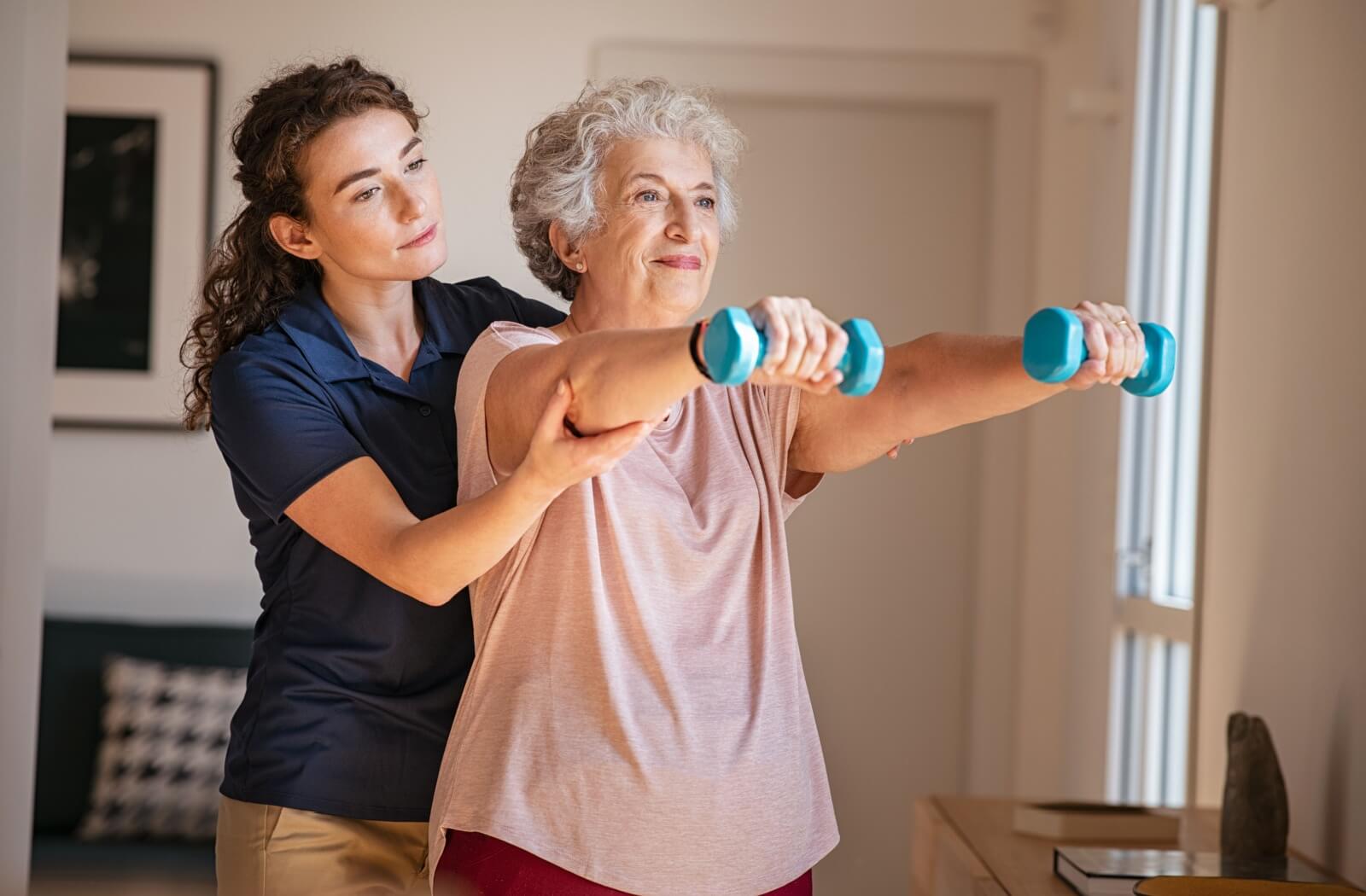Aging is a journey full of changes and new experiences. However, for many seniors, the physical changes can sometimes lead to chronic pain, leading to difficulty in their everyday lives. So how can you support a senior loved one in your life and help them manage their chronic pain?
Start by assessing the cause of their pain—a professional diagnosis can be key here. Then, try to combine a mix of dietary, physical, and environmental changes to help your loved one with their condition. These changes, though small, can make a big difference.
Identifying the Cause of Chronic Pain
The first step to understanding your loved one’s situation is to identify the cause of their pain. Self-diagnosing is rarely accurate, so make an appointment with a healthcare professional near you—it’s key to making a plan to manage your loved one’s chronic pain.
Some common causes include:
- Arthritis
- Back pain
- Headaches
- Underlying medical conditions
Arthritis
Arthritis is a leading cause of chronic pain among seniors. This condition develops when your joints are inflamed, leading to:
- Persistent pain
- Stiffness
- Mobility problems
This develops due to wear and tear and can affect almost any joint. Fortunately, it can also be effectively managed through a combination of medication, physical therapy, and lifestyle changes.
Back Pain
Back pain is a common problem that can develop due to all kinds of problems. Spinal degeneration, poor posture, and herniated discs are all possible causes of back pain. This can be mild or severe, but easily affects your loved one’s everyday quality of life.
Back pain can lead to:
- Difficulty sleeping
- Reduced physical activity
- Limited mobility
- Increased reliance on pain medication
- Frequent discomfort during daily tasks
Managing back pain is key to improving your loved one’s well-being, but it can be difficult to treat without professional help. You should always rely on professional advice when it comes to back-related problems—the human spine is extremely complex.
However, back pain can typically be managed through physical therapy, medication, lifestyle adjustments, and other targeted treatments. These can be an effective way to help your loved one find relief from their back pain and restore their quality of life.
Headaches
Headaches, including migraines and tension headaches, can develop due to all kinds of potential problems. These aren’t just mildly irritating or frustrating—they can be downright debilitating for seniors looking to find relief.
Chronic headaches can quickly lead to:
- Persistent discomfort
- Sensitivity to light and noise
- Difficulty concentrating
- Irritability or mood changes
- Disrupted sleep patterns
Managing headaches often requires a multifaceted approach. Encourage your loved one to stay hydrated, limit their caffeine and alcohol intake, and try to reduce stress levels. Relaxation techniques can be effective as well.
If your loved one is living with frequent headaches, make an appointment with a healthcare professional. Severe headaches can be a sign of serious conditions, like tumors or cancer, that can have significant long-lasting effects without treatment.
Underlying Medical Conditions
It’s important to recognize that chronic pain can also stem from underlying medical conditions, including:
- Heart disease
- Diabetes
- Bone-related conditions like osteoporosis
These conditions require a personalized approach. It’s crucial to regularly schedule appointments with licensed healthcare professionals for proper care—it’s the easiest way to make sure any potential problems are caught early on.
Tips for Managing Chronic Pain for Seniors
Once the cause of your loved one’s chronic pain is identified, it’s time to take action. A well-rounded approach is key here.
First, start with your loved one’s overall lifestyle. Diet and exercise are more important than most people think! Certain foods, like fatty fish and leafy vegetables, have anti-inflammatory properties that can help reduce pain levels and promote overall comfort. Your loved one should also regularly exercise to keep their muscles and bones strong.

Then, think about your loved one’s everyday life. Assistive devices can enhance their independence and make navigation much easier, so consider buying a cane or rollator to help them safely move about. These devices help take weight and strain off your loved one’s joints to make movement less painful.
When to Consider Senior Living
If your loved one still lives at home, it might be time to think about a move to senior living. These communities offer significant benefits, like being surrounded by a team of loving and supportive caregivers who can help your loved one effectively manage their pain every day.
Meanwhile, these communities also offer personalized approaches to help prevent future pain. With access to fitness programs, medication management, and all kinds of other amenities, your loved one will always be able to get the help they need.
Senior living communities offer a way for your loved one to enjoy a vibrant, engaged lifestyle full of support and love. They’re an excellent decision for seniors in need!
Is It Time for Senior Living?
Chronic pain can be a significant problem, but your loved one doesn’t need to suffer in silence. Instead, reach out to our community here at All American Senior Living in Warwick. Our compassionate team is ready to support your loved one every day, so schedule a tour with us today! It’s the first step toward getting your loved one the care they deserve.







13 thoughts on “Managing Chronic Pain in Seniors”
Comments are closed.